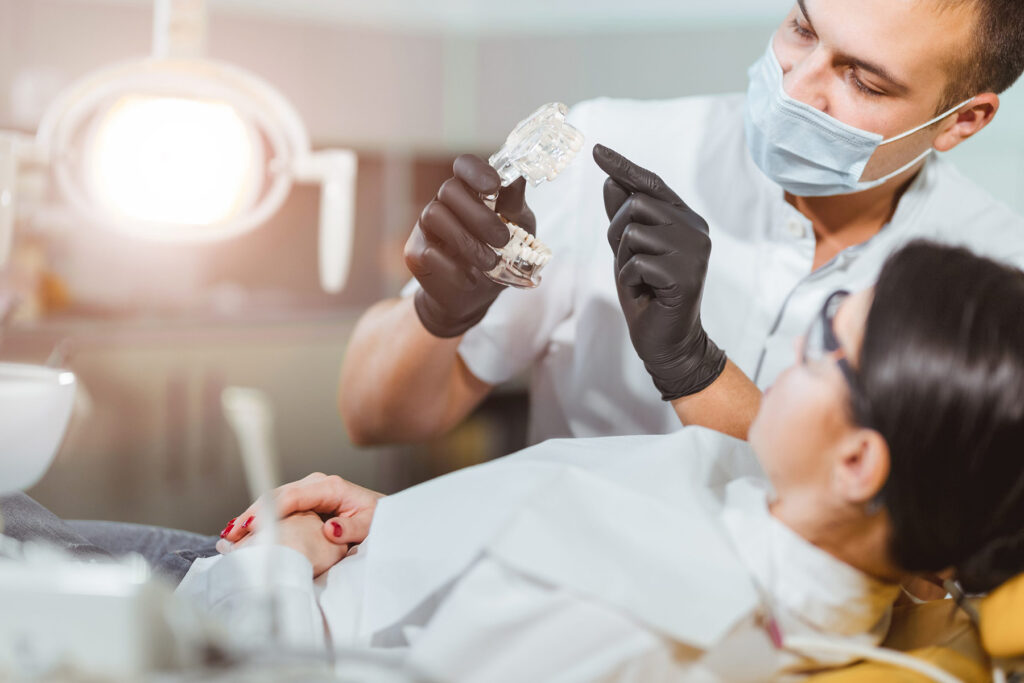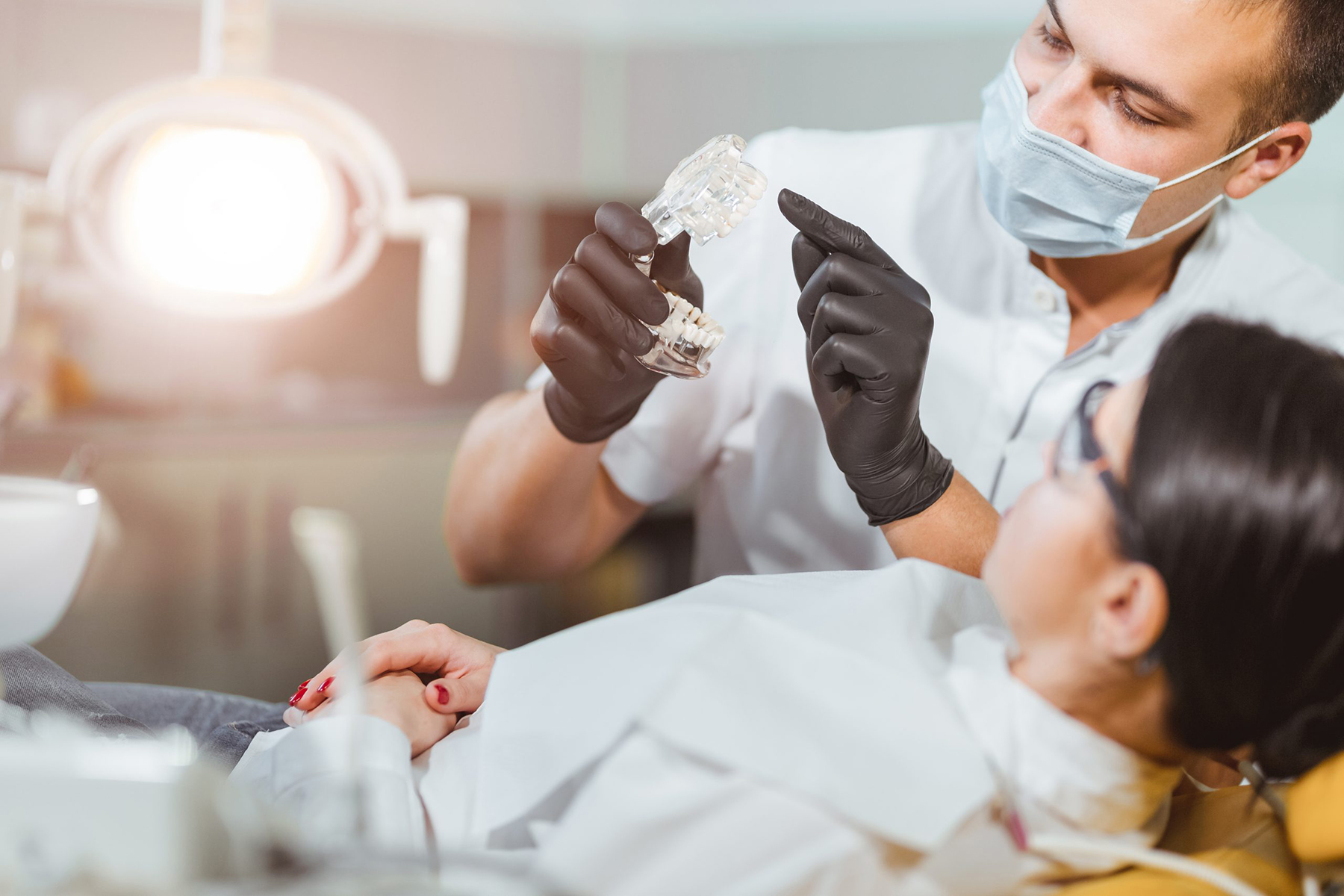
People say that a smile is the first thing someone will notice about you. Everyone wants to have that perfect Hollywood smile, but it is hard to achieve without cosmetic procedures. To be able to beam from ear to ear with the biggest smile would be a dream for some. But that’s not always the case for many people. One-third of Americans are not happy with their smile. What’s worse, the dentist is not always the most favored appointment to make, with 42% of Americans not visiting the dentist at all. Although your mouth may feel ok and your teeth look clean, problems with your teeth can stay asymptomatic for months, sometimes even years, before they start to cause an issue.
So, skipping the dentist could leave issues to become far worse than they need to be A trip to the dentist can reveal cracked, chipped, and broken teeth. Unless the tooth is at the front, or you feel it happen, you may not know about the problem until you take a trip to the dentist. So, we’re going to dive into chipped, cracked, and broken teeth and tell you what you can do to care for them.
A Chipped Tooth
Chipping a tooth is the most common dental issue out of the three, and often it’s not painful at all. A chip is commonly caused by chewing on something hard, such as toffee or a hard-boiled sweet. If a tooth is already weak, perhaps due to poor oral health care, then a hard sweet will take a chip out of the tooth. There is a common misconception that chipping a tooth will be extremely painful. However, due to a lack of nerve endings at the tip of the tooth, or the outer surface of the tooth, pain is not experienced. It might just be the shock of the sound and the feeling that makes you cry out. Sometimes, however, a chip can be so big that it exposes the extremely sensitive nerve, meaning not only with the chip come sharp, the time leading up to the repair will not be present either. Fear not, this would have to be a pretty big chip, and most people only have small chips that cause cosmetic issues. Often, if the chip is nearer the back of the mouth, the chip causes no issues, at all. It is important to make sure you take extra care when brushing over a chipped tooth. You want to make sure it’s cleaned properly, removing any plaque or food build-up, but also that you are not over brushing and causing more damage.
If your dentist notices a chip in any of your teeth, they will first assess how bad the damage is. Sometimes, dentists will advise not to have any work done at all unless the chip gets bigger. If your local asheville family dentist thinks the chip needs repairing, most can easily be polished, filed, and filled in. This all happens during one quick procedure. If the damage is worse and the chip is causing pain, the procedure will be advised.
A Cracked Tooth
A cracked tooth is a slightly more serious problem, and as with chipped teeth, they can range from a minor crack to a serious one. Unlike a chipped tooth, a crack will usually begin close to the gums. This will either crack the whole tooth down the enamel or just partially. A cracked tooth is at far more of a risk if left alone, especially if the tooth has already had work done to it, such as a filling. Unlike with a chipped tooth, cracked teeth are often painful. The shock of the impact hits the nerve, causing instant pain. If the nerve is damaged or the enamel, the tooth often becomes painful and sensitive. There is no caring for a cracked tooth at-home brushing can often aggravate the problem, and eating can cause a lot of pain. A trip to the dentist is always needed!
Cracks are much more complex to resolve. If the crack has only created a superficial line, this can be repaired using resin to fill it in. However, if the crack is so big that part of the tooth is coming away, a more invasive procedure will be used. A tooth splint is used, binding the cracked tooth to a healthy neighboring tooth and restoring the tooth to a similar state that it was in before the crack. After the procedure, it’s important to brush gently over the affected tooth and avoid eating on that side for a few weeks while the tooth naturally repairs. If the dental pulp has been damaged, a root canal will be required.
A Broken Tooth
A broken tooth is the worst of the three. A broken tooth happens when part of the tooth completely breaks off or all of it. This leaves the dental pulp exposed which can be incredibly painful. If a part of the tooth breaks off, try and save it and get to the dentist as soon as possible. They might be able to fix the tooth with a bridge or veneer. If the break is too bad, a complete extraction might be the best. You can then recover and look at the options available for filling the gap.
How To Care For Chipped, Cracked, and Broken TeethThe first thing you need to do is contact your dentist and book an appointment. Keeping the tooth clean is essential, so try to eat only soft foods and avoid eating on the damaged side. Be sure to take over-the-counter pain relief if it’s causing pain. This will also help to reduce any inflammation being caused by a severely cracked or broken tooth. There are often emergency appointments for serious dental issues, such as a bad crack or break in the tooth, so don’t hesitate to call!
Conclusion
Although a trip to the dentist is not everyone’s cup of tea, if you are having issues with either a chipped, a cracked, or broken tooth, get booked in to prevent the problem from getting any worse.
